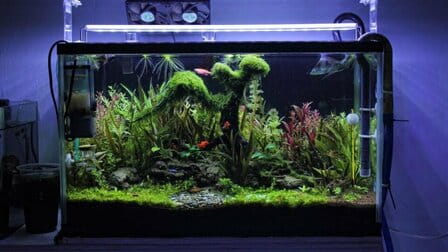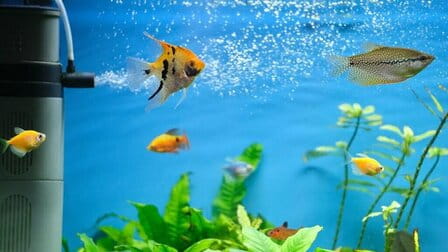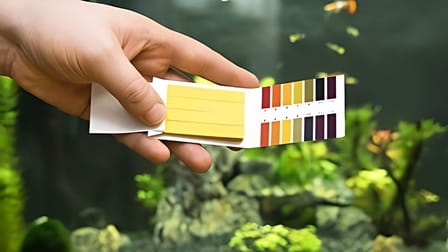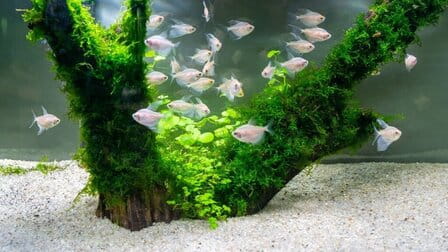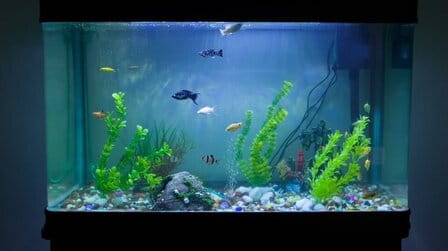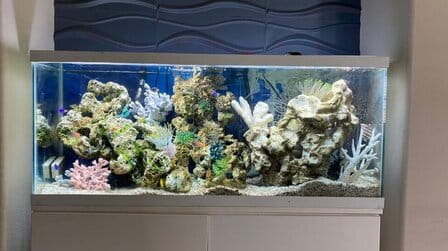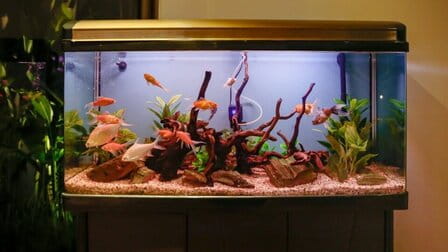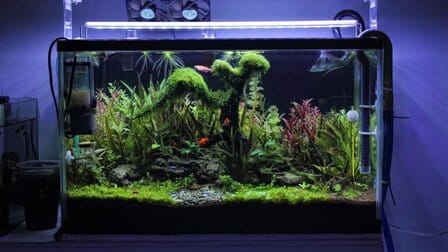Step into the mesmerizing world of aquariums, and you'll find yourself immersed in an aquatic wonderland. Among the vibrant flora and graceful aquatic life, there exists a fascinating and often misunderstood presence – different types of aquarium algae. These seemingly unassuming organisms play a vital role in the aquarium ecosystem, contributing to its balance and aesthetics. They come in various shapes, colors, and forms, each with its unique characteristics and significance. Join me as we dive beneath the surface and unravel the diverse and intriguing world of aquarium algae.
1. Green Algae (Chlorophyta): The Pervasive Pond Scum
Green algae, often referred to as "pond scum," are some of the most common inhabitants of aquariums. Their name may not sound glamorous, but these organisms are essential players in the aquatic ecosystem. Green algae are the result of excess nutrients, primarily nitrogen and phosphorous, in the water. While their presence can sometimes be unwelcome due to their rapid growth, they serve as a valuable food source for some aquatic organisms, helping maintain a harmonious ecosystem. Green algae thrive in well-lit environments, making them more prevalent in aquariums with strong lighting.
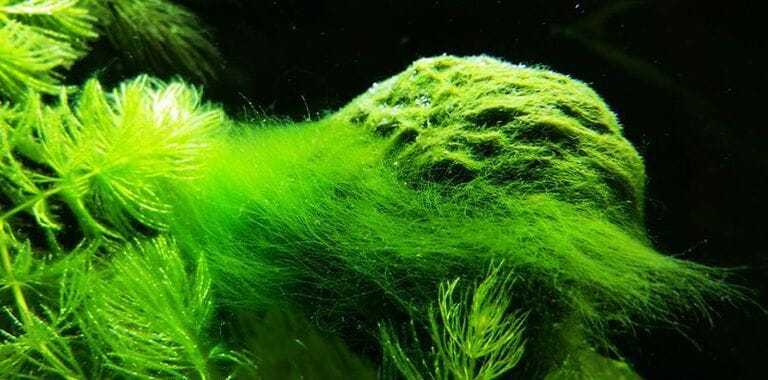
2. Brown Algae (Phaeophyta): The Gentle Diatoms
Brown algae, also known as diatoms, often make their appearance in new aquariums or those with imbalanced nutrient levels. They appear as brown or golden-brown patches on various surfaces, including glass, decorations, and even the substrate. The good news is that while their presence may be undesirable, brown algae are relatively harmless and do not pose a significant threat to aquatic life. In fact, they can serve as a valuable food source for certain species of fish and invertebrates. Managing brown algae involves addressing nutrient issues and adjusting lighting conditions to strike a better balance in the tank.

3. Blue-Green Algae (Cyanobacteria): Misnamed Yet Important
Despite their name, blue-green algae are not true algae but rather cyanobacteria. These microscopic organisms can form slimy mats that coat surfaces in the aquarium, including plants, decorations, and substrate. Blue-green algae thrive in low-oxygen and high-nutrient conditions, often indicating potential problems in the tank's water quality. Their presence can be concerning, as they can release toxins harmful to aquatic life. Effective management involves addressing water parameters, improving water circulation, and ensuring proper maintenance practices to prevent their growth.

4. Red Algae (Rhodophyta): A Splash of Colorful Variety
In the vibrant tapestry of aquarium life, red algae, also known as macroalgae, bring a touch of color and variety. Unlike the previous types mentioned, red algae are intentionally cultivated in some aquariums for their aesthetic appeal. These algae can range from delicate, branching forms to robust, leafy structures, adding depth and visual interest to the tank. While they are generally harmless, their growth should be controlled to prevent overshadowing other aquatic life and to maintain the overall balance of the ecosystem.

5. Filamentous Algae: The Thread-Like Intruders
Filamentous algae are easily recognizable by their long, thread-like appearance. These algae can form tangled mats that cover plants, decorations, and even the substrate, affecting the visual appeal of the aquarium. Filamentous algae are often associated with excess nutrients and poor water circulation. While their presence may be less desirable, they can be physically removed and managed by addressing nutrient imbalances in the tank.

6. Green Hair Algae: A Tangled Tale
Green hair algae, as the name suggests, resemble fine, green strands that can attach to surfaces and grow rapidly under favorable conditions. They are often introduced into aquariums through new plants or decorations. While their growth can be unsightly and challenging to manage, they can be controlled by maintaining optimal water conditions, reducing nutrient levels, and introducing natural grazers, such as certain fish and snail species.
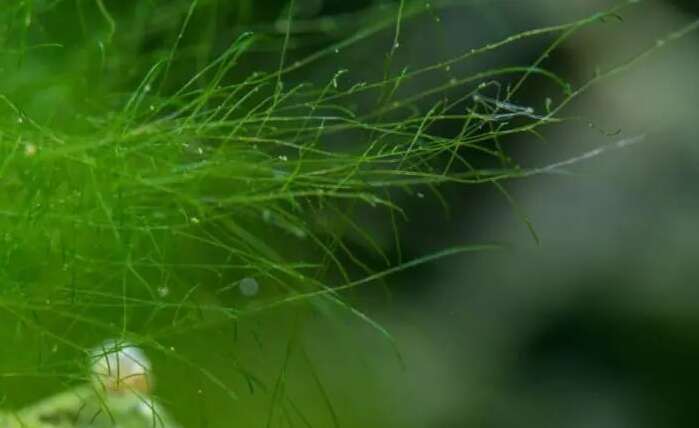
7. Brush Algae (Cladophora): Nature's Ornamental Accents
Brush algae, also known as cladophora, form dense, bushy tufts that can attach to rocks, driftwood, and decorations. They thrive in moderate to high light conditions and are often indicative of excess nutrients in the water. While they are not harmful to most aquatic life, their growth can compete with other plants for resources. Effective management involves trimming and removing affected areas, as well as addressing nutrient imbalances.

8. Black Beard Algae (Audouinella): The Persistent Adversary
Black beard algae, characterized by their dark, bristly appearance, can be a persistent challenge for aquarium enthusiasts. They often attach to surfaces, including plants and decorations, and can be difficult to remove. Black beard algae are commonly associated with fluctuating CO2 levels and low phosphate concentrations. Effective management involves addressing these factors and maintaining a stable environment to discourage their growth.

9. Green Spot Algae: The Speckled Invaders
Green spot algae manifest as small, dark green spots that adhere to aquarium surfaces, including glass and leaves. They are often found in areas with high light intensity and slow water flow. While their presence is not usually harmful, they can obscure the view and affect the appearance of the aquarium. Green spot algae can be managed by adjusting lighting conditions, improving water circulation, and maintaining proper nutrient levels.

10. Dust Algae (Spirogyra): The Suspended Particles
Dust algae, also known as spirogyra, appear as fine, green particles suspended in the water. They are most commonly found in new aquariums or those with unstable water conditions. While their presence may be concerning, dust algae are usually harmless and can be managed by improving water quality, ensuring proper filtration and circulation, and maintaining a stable environment.

Conclusion
As we journeyed through the intricate underwater forest of different types of aquarium algae, we uncovered a diverse array of organisms, each with its unique characteristics and significance. While some algae may be perceived as nuisances, they all play a role in the delicate balance of the aquarium ecosystem.
Understanding the various types of aquarium algae empowers aquarium enthusiasts to maintain a healthy and vibrant aquatic environment. By addressing nutrient imbalances, optimizing lighting conditions, and practicing effective maintenance routines, aquarists can manage algae growth and create an environment where aquatic life thrives.
So, whether you're cultivating a lush underwater garden or seeking to strike a harmonious balance in your aquarium, remember that the world of aquarium algae is a complex and fascinating realm that adds depth and character to the captivating microcosm within your tank. Embrace this underwater tapestry, and let the diverse types of aquarium algae enhance the beauty and vitality of your aquatic oasis.

